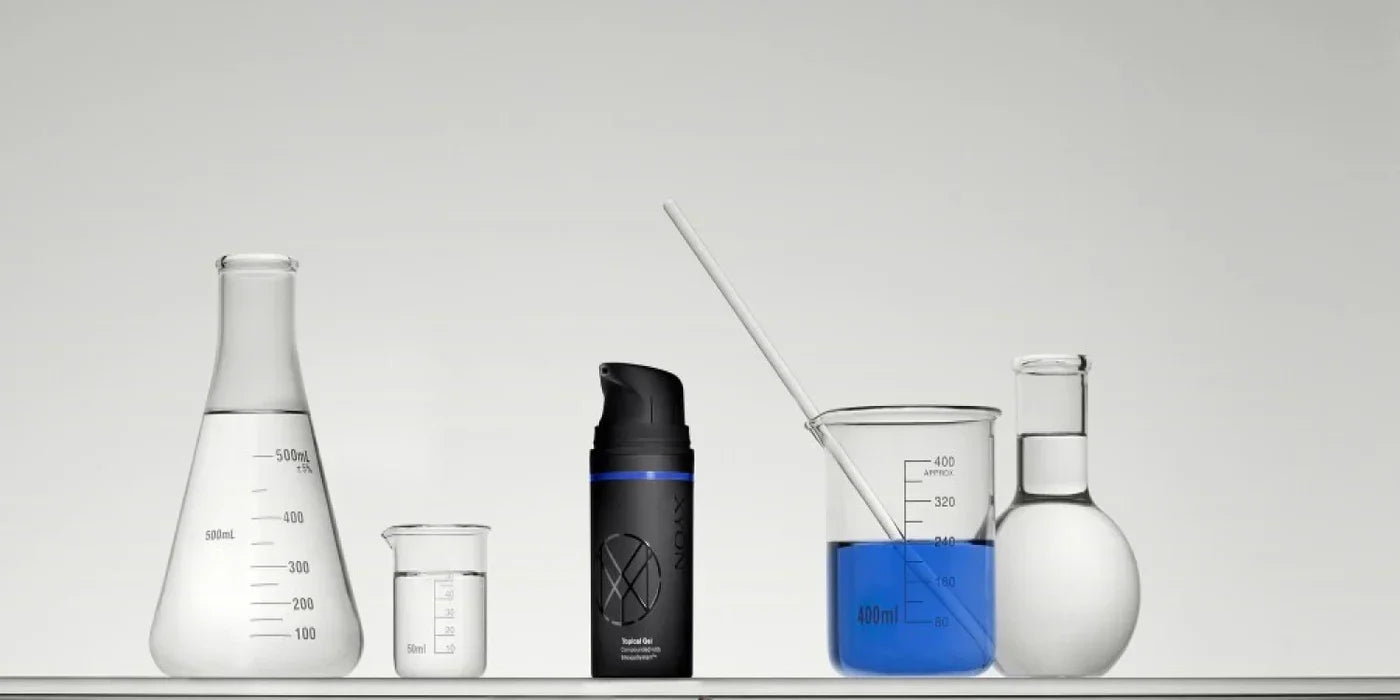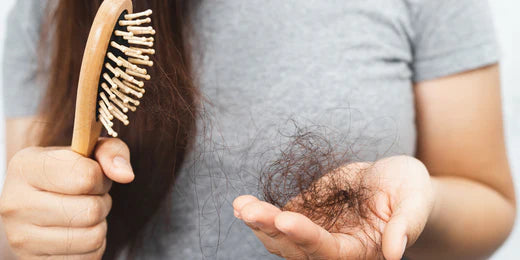The idea of cosmetic products or pharmaceuticals containing alcohol, or an ‘alcohol-based’ ingredient often comes with certain connotations that they’re harmful for your skin, but the truth is, many formulas require these types of ingredients to keep them stable over time. As more and more people become conscious of the ingredients they’re putting in their body, it’s important to understand that just because a certain ingredient is labeled an alcohol, or is part of the alcohol family, doesn’t mean that it’s bad for you.
If you’re looking for a topical hair loss treatment your search may have led you to narrow your decision down to formulas containing finasteride, minoxidil or both of these active ingredients. But formulas can vary significantly and there’s a good chance that the option you’re considering could contain some kind of alcohol or alcohol-based ingredient so it’s a matter of understanding the differences between your options.
We’re going to dive deeper into two key alcohol-based ingredients typically found in topical hair loss formulations: propylene glycol and caprylyl glycol. We will break these down for you and talk about their potential benefits and drawbacks. We also explain why XYON has opted to use caprylyl glycol in our topical formulation.
What is propylene glycol?
Propylene glycol is a synthetic, FDA-approved additive which is used in many foods and drinks, as well as cosmetics and pharmaceutical solutions. Its chemical structure contains two alcohol groups, meaning it belongs to the alcohol family and it's considered a short-chain alcohol. It’s colorless, odorless and has a syrupy consistency.
Why is propylene glycol found in some hair loss medications?
Propylene glycol has several properties that make it a useful additive:
- It’s a humectant: this means that it draws moisture into the skin from the environment.
- It has antimicrobial activity: it prevents bacteria from growing in the solution, so it can increase the shelf-life of products.
- It thickens the texture of solutions, making them easier to spread across the skin
- It enhances the amount of active ingredients that can be absorbed into the skin (Mistry & Notman, 2024).
Can propylene glycol be bad for the scalp?
Propylene glycol has been associated with skin irritation. For example, it was found to be the main cause of allergic contact dermatitis in a study looking at patients who reacted to generic topical minoxidil (Friedman et al, 2002). Possible symptoms of allergic contact dermatitis or sensitivity to propylene glycol may include:
- Irritation and redness
- Itching and flaking of the scalp
- A skin rash
If you develop any signs of a serious allergic reaction, such as difficulty breathing, you should visit an emergency room immediately.
Aside from sensitivities, propylene glycol can have other drawbacks when it comes to their inclusion in topical hair loss treatments. As mentioned, it can enhance absorption of the active ingredient into the skin, but this can mean that an uncontrolled amount of medication enters the bloodstream. In the case of finasteride and other hair loss medications, higher amounts of active ingredient entering the bloodstream can increase the risk of side effects (Lee et al, 2018).
The humectant properties of propylene glycol can also come with problems. The chemical structure of propylene glycol (a short chain alcohol) means that it evaporates quickly. So, when it's applied to the scalp in a topical medication, it draws in moisture but then quickly evaporates. This can leave the scalp feeling dry and irritated. Given that hair loss medication should be applied daily and often for a prolonged period of time this can become problematic, particularly for those with a sensitive scalp.
What is caprylyl glycol
Caprylyl glycol is an alcohol-based ingredient commonly used as an additive for the same beneficial reasons as propylene glycol, but it seems to be less commonly associated with side effects. It is a longer-chain alcohol and its chemical structure means that it’s associated with a lower risk of irritation. Although it doesn’t eliminate the risk completely, incorporating caprylyl glycol into topical finasteride or minoxidil likely reduces the risk of scalp irritation, making it more comfortable to apply daily.
Does XYON's topical finasteride contain alcohol?
In general, the types of alcohol ingredients that are most prone to causing irritation are short-chain alcohols, such as propylene glycol and isopropyl alcohols. XYON’s formulation doesn’t contain any short-chain alcohol ingredients because the goal was to develop a formula that is comfortable to apply each day.
Instead of propylene glycol, we chose to incorporate caprylyl glycol into our formula in order to achieve the right texture and ensure that our compounded treatments remain stable and safe to use. If you’re someone who suffers from sensitive skin and are considering a topical hair loss treatment, XYON’s SiloxysSystem Gel™ could be a great option.
The bottom-line on alcohol in topical finasteride
Any mention of alcohol in products that you’re applying to your skin can be off-putting, but they’re not all bad. In fact, many of them are highly beneficial ingredients for topical formulations with humectant and antimicrobial properties allowing products to spread across your scalp easily and stay in your bathroom cabinet for longer.
If you’re worried about possible allergies and irritation, it is a good idea to choose a product that uses an alternative to propylene glycol, which has been associated with skin-related side effects. Instead, longer-chain alcohols such as caprylyl glycol carry the same beneficial properties but are less commonly associated with skin irritations and sensitives due to differences in their chemical structures. Remember, some ingredients might get a bad rap, but formulators can be intentional about what they choose to include to prioritize the comfort and safety of the people who use their products.
Our low dose compounded topical finasteride with minoxidil solution does contain an alcohol called propylene glycol. As discussed above, it’s generally well-tolerated but some patients can be sensitive to this ingredient. Patients with a known allergy to alcohol, but who would prefer to start with a lower concentration hair loss treatment are encouraged to talk to their doctors about whether this formulation is right for them.
References:
Friedman, E.S., Friedman, P.M., Cohen, D.E., Washenik, K. (2003). Allergic contact dermatitis to topical minoxidil solution: Etiology and treatment. Journal of the American Academy of Dermatology, 46(2). https://doi.org/10.1067/mjd.2002.119104
Lee, S.W., Juhasz, M., Mobasher, P., Ekelem, C., Mesinkovska, N.A. (2019). A systemic review of topical finasteride in the treatment of androgenetic alopecia in men and women. Journal of Drugs in Dermatology, 17(4), https://www.ncbi.nlm.nih.gov/pmc/articles/PMC6609098/
Mistry, J., Notman, R. (2024). Mechanisms of the drug penetration enhancer propylene glycol interacting with skin lipid membranes. The Journal of Physical Chemistry B, 128(16). https://pubs.acs.org/doi/10.1021/acs.jpcb.3c06784#:~:text=Propylene%20glycol%20(PG)%20is%20a,transport%20of%20drugs%20across%20it.




